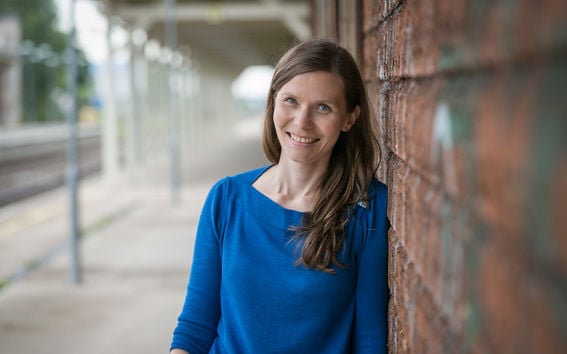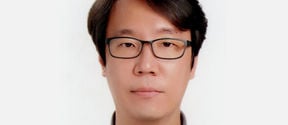Miina Rautiainen’s forest images are taken from a height of hundreds of kilometres

Professor Miina Rautiainen, what do you research and why?
The field of my professorship is remote sensing, which means the measurement of distant phenomena by making use of electromagnetic radiation. In practice, remote sensing involves examining the Earth using images taken by measurement devices attached to satellites. From these images, anyone would be able to recognise features such as houses and roads. We researchers do not look at the pictures themselves, however, but instead analyse the layers that the images are comprised of. These layers correspond to different wavelengths.
I have always been interested in vegetation and specifically in the remote sensing of forests. What interests me most about forests is the canopy, for which we are developing various methods to study its structure. The canopy is the most sensitive part of the forest, and it reacts the quickest to different kinds of stress factors such as drought and damage by insects. This is why the condition of the canopy is a more responsive indicator than the tree trunks when investigating sudden environmental changes.
How did you become a researcher?
I never had an actual plan to become a researcher. Good opportunities have come my way and I have grasped them. For me, as for many other researchers, the decisive time was when I was working on my master’s thesis. I got to participate in an interesting international project and I had a fantastic thesis advisor – that’s where the passion for research began.
What have been the highlights of your career?
It is always a great feeling when the work of one’s own research group gets published. Passing the peer review process is an indication of the quality of the work, and by being published the results are made available to everyone.
Because we are carrying out basic research, we don’t get user feedback – no one comes to us and says how great our product or application is. This is why the large grant received from the European Research Council was a real high point: a recognition that the research I have been doing for fifteen years is good and valuable.
What is required from a researcher?
One thing required of a researcher is, of course, curiosity. One must be careful and patient in one’s work, because it is rare that results are obtained quickly. A touch of impatience is also required, however, so that one doesn’t get stuck analysing the material forever but is instead able to get things done.
What do you expect from the future?
I hope that I can continue working on basic research. In the five-year ERC project which has just started, we are developing a new theory which will model the radiation reflected by forests in the same way that satellites measure this radiation. In this way, we can learn to understand how satellites measure signals – or don’t measure them – and develop methods for more precise assessments of forest resources.
In the short term, I am really looking forward to the field campaigns that are part of the project. As I’m normally just sitting in front of a computer, it feels good to sometimes get into the forest as well. We have test sites in Finland and central Europe where we measure the structure and spectral characteristics of the forests. We refer to these areas as ‘ground truth sites’, and we can use them to investigate how accurate satellite measurements of the forests are and thus improve the performance of the methods used.
International climate agreements require of countries very precise and up-to-date information about their forest resources. It isn’t possible, of course, to measure everything being based on ground, and this is why remote sensing is so important. In this area, Finland has traditionally had a positive attitude towards the technology, and for a long time already has been making use of remote sensing in monitoring forests.
Miina Rautiainen and Aalto University’s other recently tenured professors will be sharing about their research at the Installation Talks event to be held on 30 January. We hope to see you there! More information here.
- Published:
- Updated:
Read more news

Min-Kyu Paek has been appointed Assistant Professor at the Department of Chemical and Metallurgical Engineering
Min-Kyu Paek has been appointed Assistant Professor at the Department of Chemical and Metallurgical Engineering
Camilla Hollanti elected as a member of Finnish Academy of Science and Letters
Camilla Hollanti leads a prominent research group on applications of algebra and number theory. The central topic of her research is to apply the methods of algebra and number theory to problems encountered in communication systems. Applications include wireless security and secure distributed computation.
Aalto ARTS alum Vidha Samya’s artwork featured at the Venice Biennale 2024
The Pavilion of Finland presents ‘The pleasures we choose’ at the 60th International Art Exhibition – La Biennale di Venezia until 24 November 2024.